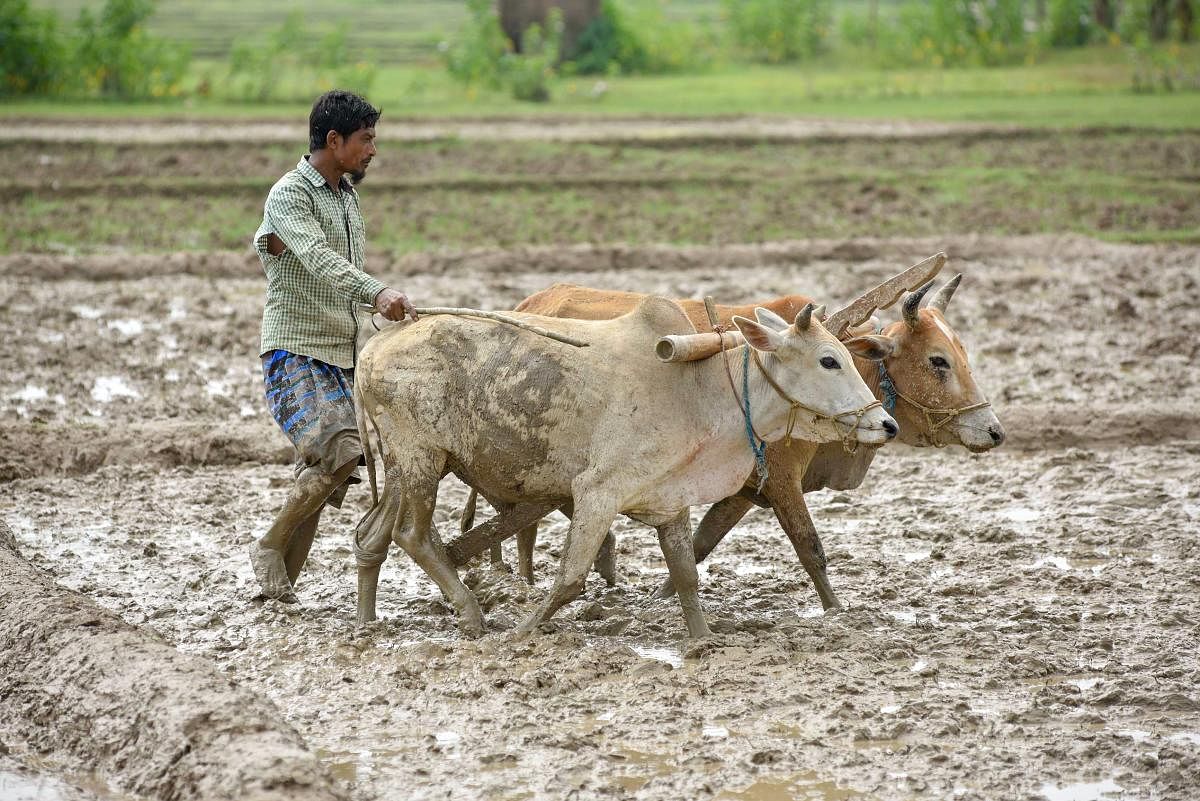After being under siege of the irrigation and chemical-intensive Green Revolution for over six decades, agriculture is now in the throes of a revolutionary change. Over 1,63,000 farmers on some 1,50,000 acres of farmland spread across six agro-climatic zones in Andhra Pradesh have successfully demonstrated that farming without chemicals is a profitable possibility, and that higher yields could be achieved by reducing external inputs and water. Called Zero Budget Natural Farming (ZBNF), this initiative is expected to co-opt six million farmers into it by 2024.
Replacing fertilizers and pesticides with concoctions of locally available cow dung, cow urine, jaggery and pulse flour, ZBNF ensures perfect soil conditions for plant growth while ensuring protection against pests. It does so by keeping the top soil covered with crop residues to increase water retention while beejamrutham, coating of seeds with cow dung and urine; jeevamrutham, concoction made of dung, urine, jaggery and pulse flour to multiply soil microbes; and kashayams, concoction with lilac and chilies to protect plants from pests, do the rest.
Pioneered by Subhash Palekar, an innovative farmer from Maharashtra, ZBNF has been in vogue on small scale across several farms in the country for over a decade now. But by rolling it out on a large scale under its Rythu Sadhikara Samstha (RySS), the Government of Andhra Pradesh has given ZBNF the desired fillip. Deservedly so, as it has shown increase in yields for all important crops: cotton by 11%, paddy by 12%, groundnut 23% and chilli by 34%. What is more, yield increase was achieved at less than half the cost of cultivation.
Natural farming had its place under the sun even before Masanobu Fukuoka’s One Straw Revolution had gained popularity, but there was no measured assessment of low-input farming practices as an alternative to the so-called mainstream agriculture that has become the bane of farmers in recent years on account of rising input costs, stagnation in productivity and adverse health and environmental impacts. It needed political traction in no uncertain terms to pull farmers out from the corporate-sponsored state-subsidised chemical abyss.
Although the pilot initiative in 50 villages in 2015 has moved on to cover 704 villages in the state in the last three years, these are still early days for natural farming to spread its roots far and wide. ZBNF has resilient features to cushion against rising temperature and shrinking moisture, but unless the operative change at the grassroots fuels transformation in the institutional architecture of agriculture research and extension, backed by market support, the desired paradigm shift may remain transitory.
However, promoters of ZBNF are convinced that it has all the necessary features to go the distance: a rising consumer demand for healthy products; a growing market for organic output; a low-input, low-risk farming practice; a climate-resilient model that conserves natural resources; and a system that reduces greenhouse emissions from farmlands. Further, it fits well within the agriculture growth trajectory projected under the AP Swarnandhra Vision — 2029, which seeks to increase food grain productivity from the current 2,641 kg/ha to 4,490 kg/ha over next three years.
Administered with support from the Sustainable India Finance Facility (SIFF) — set up jointly by the United Nations Environment Programme, the World Agroforestry Centre and BNP Paribas — ZBNF follows a decentralised operational structure at a cluster level, which covers five Gram Panchayats each, with three community resource persons leading the farmer-to-farmer training and extension for about 400 farming families. This bottom-up capacity building programme for the entire state is worth
Rs 16,000 crore over the next six years.
Unlike the early years of the Green Revolution, when farmers were lured into it with free seeds and fertilizers, the new approach is persuasive as it demonstrates the virtues of natural farming on rented plots in the villages. A batch of 100 natural farming fellows has been selected to help farmers de-addict their farms from the obsessive practices of the past.
While the core objective of scaling up investments in sustainable and climate-resilient transformative agriculture is timely, a critical question remains regarding integrating the new institutional architecture into the existing agriculture research, extension and administration alongside creating a remunerative market for brand ZBNF. For the proposed paradigm shift in agriculture to make a significant mark on the otherwise dismal farming scenario, farmers adopting ZBNF must be cushioned against prevailing market externalities.
Clearly, ZBNF is a triple-win opportunity as it enhances crop productivity by reducing input costs; helps farmers increase their net income; and induces climate resilient agriculture through natural means. For over 60% of the country’s population currently engaged in agriculture, ZBNF has come to be a harbinger of change.
--
(The writer is an independent researcher and academic)
